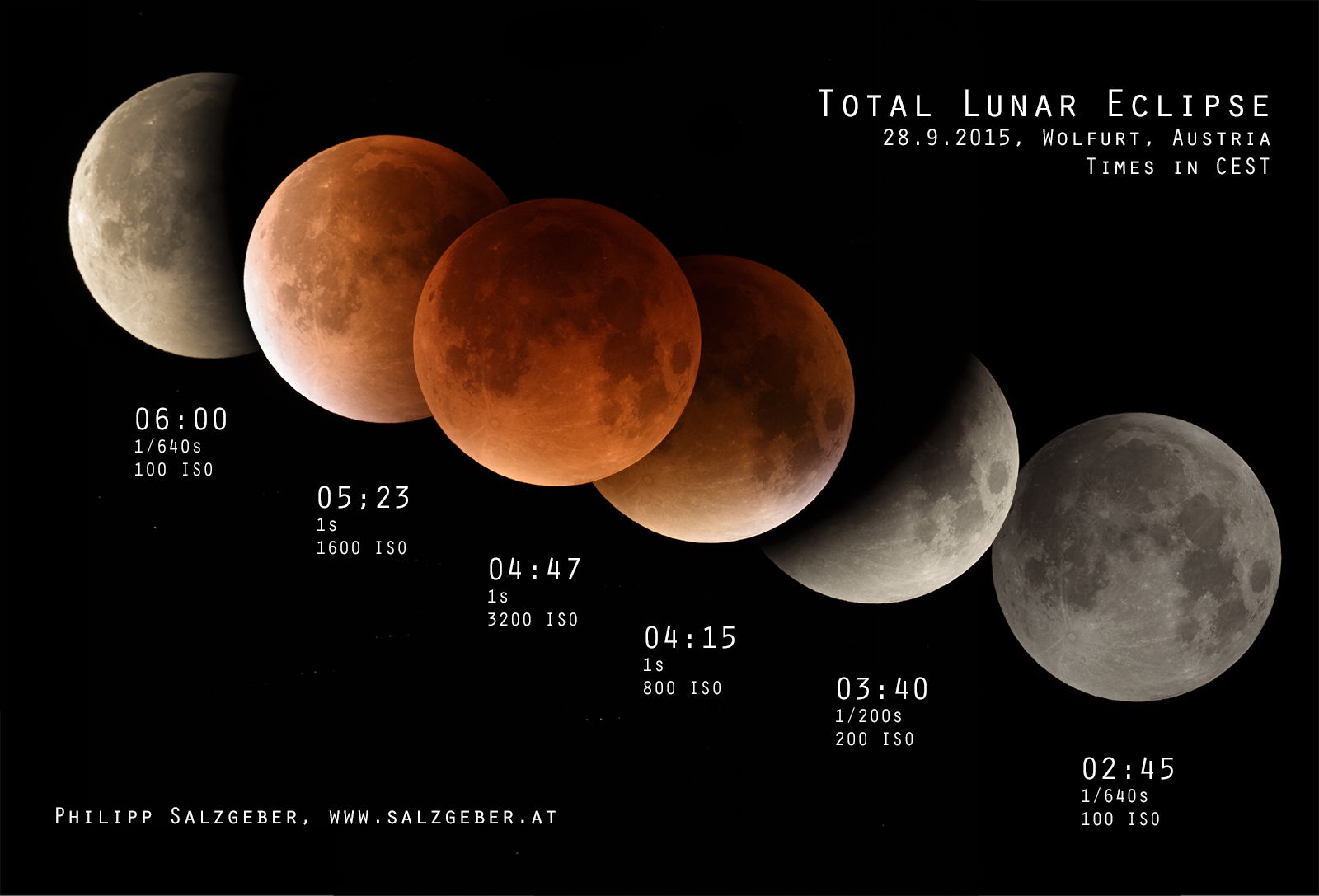
The partial phase of the eclipse unfolds to the east just after local sunset. Meanwhile, eclipse watchers in Asia, India, western China, Russia, Australia, and the Pacific region will get a chance to see the second half of the show. This means New England will unfortunately miss this one entirely.įrom western South America only the early stages of the eclipse-as Earth’s shadow begins to cover the moon-will be visible.

#Lunar eclipse time lapse 2015 full
Western North America will have a good view of this special sky show, while observers in the Plains and on the East Coast will have to be content with seeing only the first half as the moon begins to be gobbled up by Earth’s shadow.įor early risers in the eastern half of North America, the full moon will be sinking below the western horizon in a quickly brightening dawn sky just as the total eclipse is getting under way. No one can predict exactly what color we'll see before each eclipse. Active volcanoes spewing tons of ash into the upper atmosphere, for instance, can trigger blood-red eclipses. The moon's color during totality can vary considerably depending on the amount of dust in the Earth's atmosphere at the time. Unauthorized use is prohibited.Īs a result, expect to see the lunar disk go from a dark gray color during the partial phase of the eclipse to a reddish-orange color during totality. Now that science has explained the celestial mechanics at play, we can all simply enjoy the cosmic ballet. This usually happens only twice a year, and can be seen from only one hemisphere of the Earth.įor thousands of years, eclipses of Earth’s lone natural satellite have garnered awe and fear. They happen only during a full moon, and only when the sun, Earth, and moon are precisely aligned so that our planet's shadow completely blankets the moon’s disk. Total lunar eclipses, known as blood moons, are even more rare. This lineup doesn't happen every time the moon makes its monthly trek around Earth, though, because the orbit is tilted and usually keeps the moon out of Earth's shadow.

The first and second happened in April and September 2014, and the last of the tetrad will grace our skies on September 28, 2015.ĭuring a lunar eclipse, Earth comes between the moon and the sun, casting a shadow. The pattern won’t repeat for another 20 years or so. This weekend's blood moon will be the third of four lunar eclipses, dubbed a tetrad, over the course of two years.

The moon will only skirt the deepest and darkest part of Earth’s shadow, or umbra, and totality could last anywhere from nine to 12 minutes. The most spectacular part of the eclipse will be the totality phase, when Earth's shadow completely covers the moon and turns it an eerie red. Western North America will have a front-row seat on Saturday as the full moon gets painted red in the briefest eclipse this century.


 0 kommentar(er)
0 kommentar(er)
